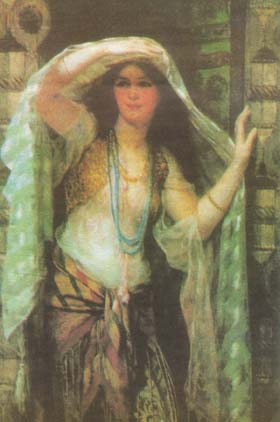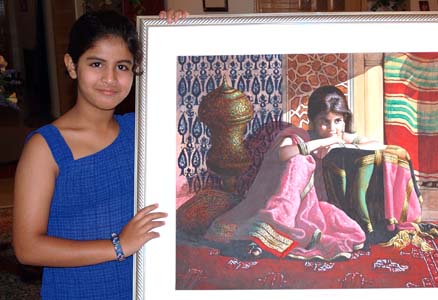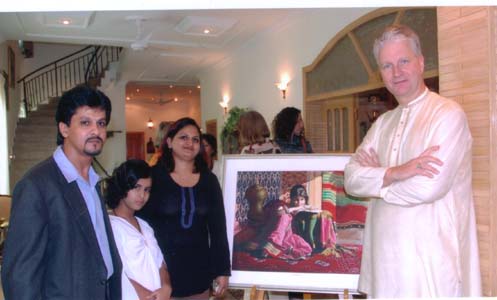 home
about
artists
exhibitions press
contact
purchase
home
about
artists
exhibitions press
contact
purchase |
|||||
|
ASHKAL https://newspakistan.tv/photo-exposition-on-paris-arc-de-triomphe-held-at-afk/  Photo Exposition on Paris’ Arc de Triomphe held at AFK (text and video)By M M Alam, Saturday, July 28, 2018 KARACHI: Venue was the Main Art Gallery of Alliance Française (French Cultural Centre) of Karachi where visual artist Ashkal exposed photographs depicting the statues carved on Arc de Triomphe.
Vice President of the AFK Committee M. Ali Dehlavi, while commenting on the significance of the exposition, stated: “It’s an honor for the Alliance Française de Karachi to host an event like this. It involves an artist Ashkal whose work has come to the notice of those who promote relations between their and other countries. A number of diplomatic missions have worked with Ashkal and exhibited his work or taken great interest in it. “Today we have the opportunity of looking at a landmark in Paris – Arc de Triomphe – and the aspects of it which the artist has technically – through great effort- photographed in an unusual way. It’s lovely to be taken back to France and be taken back to a subject that’s significant and nostalgic. That evokes a lot of emotion which is the loss of lives in warfare and to commemorate those who have lost their lives during the war.”
Ashkal said: “I am known as a visual artist (a painter) but I have
been professionally doing photography for the last two-and-a-half
decades. During my Europe and America visits, I have photographed
many landmarks but was unsure whether to expose them or not. But
when I realized it was time to do so I contacted Alliance Française.
And through their efforts, this event took place and I am very
happy that my work has been brought to the public. I have chosen the
Arc de Triomphe as my topic because Paris has always been a place
that speaks to me. By means of these snaps, I have endeavoured to
honour the fallen soldiers of France”.
M M
Alam
https://antiquitynow.org/2014/01/16/todays-muse-welcomes-art-by-ashkal/
When Ashkal, who lives in Pakistan, sent us the
above artwork for our critique, we immediately requested his consent
to post it on Today’s Muse, AntiquityNOW’s creative section. Ashkal
says that his art grows out of his love of learning about the world,
its people and diverse cultures.
Not content to simply sit and paint what is close
at hand, Ashkal has travelled widely, and with a lively curiosity,
interprets the essence of a people in planes, angles and
perspectives that embrace the ancient and modern. What sparks your
imagination in The Musical
Sensations—Female? Is it the juxtaposed planes of the female
form? Is it the evocative images of musical instruments and their
silently rising ancient notes? Or is it the decorative elements
that are both modern in their angular rendering and reminiscent of
ancient Egyptian and Mesoamerican art? We are pleased to display
Ashkal’s unique work in our Today’s Muse section and look forward to
featuring additional creations in the future.
https://www.independent.co.uk/arts-entertainment/art/features/artspace-galleries-london-and-paris-group-exhibition-2011-2275943.html
Artists of diverse nationalities, both renowned and emerging, will
be showcased at the appropriately international Artspace Galleries
in London and Paris for this year's group exhibition which opens
tomorrow.
Featuring Anna Luukkainen, Ashkal, Barbara Palka-Winek, Cristina
Rodriguez, Festa Joubert, Sipei Benson, the group exhibition is a
collection of mixed media with vibrant and vivid colour.
This group exhibition will tour between London and Paris to meet
with greater audience in the core cities of the Western art world.
Group Exhibition 2011 is at Artspace Galleries Paris 28 April until
10 May and London 16 May until 21 May
By
the time he returned to Pakistan in 2000, his style of work had
grown far beyond the pen and ink medium. Influenced by the
intricacies of restorative work, he now began to specialize in
miniatures of Oriental scene paintings of old masters. Experiments
in modern abstract calligraphy continued alongside.
The
on-going exhibition of paintings at his private gallery in DHA,
Karachi, is more than just a display of the artist's oeuvre. Titled Classical
Collection, this body of work consists of reproductions of
museum pieces and personal works painted under the influence of the
old masters.
Cloning of period works has been going on for centuries, it is by no
means a new phenomenon. However, it is the motivation of creating
reproductions that define the status of the art and the artist.
Historical references prove that this art form has been indulged in
and practised for a variety of reasons. Reproducing for the purpose
of absorbing the types, methods and atmosphere of another master's
work is something all good artists have done, particularly during
the early stages of their career; and sometimes have continued to
do so until the end of their working lives.
Rembrandt, of course, was the principal artist who continued all his
life to make copies of other people's drawings and engravings in
order to absorb the essence of the original. He copied amongst
others, works from the schools of Raphael and Mantegna, as well as
Indian Mughal miniatures. The 17-century East West artistic
interchange went both ways. We know of quite a few copies of
European drawings and engravings made in India under Mughal emperors
Akbar and Jahangir. Both parties were interested not only in what to
each were exotic details of fact, but in what they could learn of
types and methods. The same sort of exchange has taken place between
Europe and Japan since the 17th century.
Stroke for stroke fidelity was the favoured style of image making in
the Far East for generations, particularly in China and Japan. Here
a greater conscious emphasis was laid on capturing the "spirit of
the forms," so that another kind of copying could be carried out
when an artist worked "in the spirit of" a certain master either
after one of his actual compositions or only in his manner. Good
copies of masterpieces either close or free, were very highly
valued, even when the copyists were not themselves major masters —
so long as they captured something of the spirit of the original.
It
is still very much an open question how many of the much admired
drawings attributed to major artists of the Southern Sung Dynasty
are "originals" or inspired copies.
Ashkal's current exhibition carries a considerable number of
reproductions attributed to the Orientalists. Evoking or
representing North Africa, the Holy Land or the Middle East,
Orientalism, which was at its peak in the 19th century defined a
taste for painting exotic subject matter. Many leading artists
including Delacroix visited these areas and were inspired to paint
pictures of Oriental subjects which reflect both the exoticism of
Islamic Africa and the classical dignity of living antiquity.
Also in the exhibition are paintings of colonial India which carry
the same rich cultural trappings and grandeur. The artist's
original creations of local genre scenes and figurative works too
are on display. Rendered in the manner of the Orientalists, it is
this affinity to their style that loosely integrated Ashkal's own
works with the rest of the paintings.
Catering to a growing clientele for miniatures, Naveed Ashkal has
produced a considerable amount of work but gallery responses to his
art have been disappointing. He was unable to hold a solo in any of
the leading art outlets. Undeterred, the enterprising artist
launched a gallery of his own by the name of Louvre. Within a
year this venture packed up and his next experiment Naveed's
Gallery 101 also met a similar fate.
"Handling these issues was impeding my work production and I
abandoned the idea of a commercial gallery. Now I have a private art
outlet by the name of Ashkal's Gallery where I display my paintings.
I also have a studio in London as I now work for some galleries in
Europe, the UK and the US. I am commissioned reproductions for which
I have to travel abroad frequently in order to study the masters in
the museums.
"I
have attended workshops, painted reproductions in the Louvre and I
maintain a small reference library also. In Pakistan I have a large
clientele, mainly from the diplomatic community, and currently my
workload has increased so much that I have employed a manager to
handle my customers," he says.
There is a thriving market for reproductions in the West but this
art form enjoys low appreciation levels here. Ashkal is quick to add
that he does authentic reproductions as close to the original as is
possible. This is an arduous task and involves considerable close
observation, skill, expertise, a thorough understanding of the
painting's atmosphere and dedication on the part of an artist. But
this art form has no value here. It is dismissed as mere "copywork"
which does not merit the credit given to an original creative piece
of art.
Fraudulence is most likely to occur when the demand for a certain
kind of work coincides with scarcity and thus
raises the market value. Unprincipled dealers have encouraged
technically skilled artists to create forgeries, occasionally
guiding them to supply the precise demands of collectors or museums.
This is by no means a modern phenomenon. At least a dozen excellent
replicas of da Vinci's Mona Lisa exist, most of them by his
students.
Dutch forger Meegerem is famous for employing a combined composite
and stylistic procedure in which he lifted heads, hands, figures
and other Vermeer props from original Vermeers to recreate new,
genuine Vermeers. He made seven of them between 1936 and 1942 and
eventually confessed to the crime. Along with artists and dealers,
collectors have often been known to encourage such fraudulent
practices. This collusion and the ethical issues arising therefrom
clouds this kind of art with grey areas, making it difficult to
categorize its standing. Naveed Ashkal rationalizes this situation
with his own brand of logic. He says, "If a buyer comes to me with a
request to reproduce Sadequain or Ahmed Pervaiz I will never do it
no matter how much money I am offered. I have to keep in mind my own
sense of satisfaction regarding the painterly process and I have my
reputation to think of also. If I have to reproduce I will do the
masters for which I am paid in foreign currency and which are
valued abroad, presently and in the future. After all, this is why I
receive commissions."
In
the meanwhile setting aside the considerations of true and false,
the visual pleasures of viewing the masters, counterfeited or
otherwise, are always there. Some of Ashkal's reproductions and
inspired originals in the Classical Collection are extremely
well-handled and a treat to look at.
Illustrations:
copying from classical genres and painting realistically.
|
|||||
|
|
E-mail: info@hayhillgallery.com |
||||
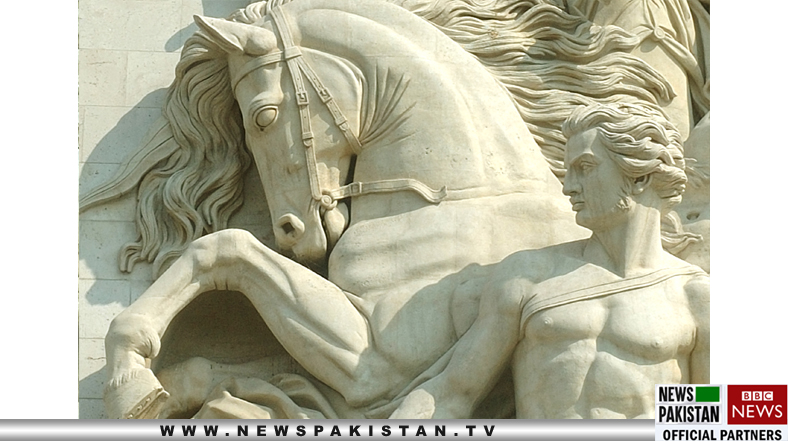
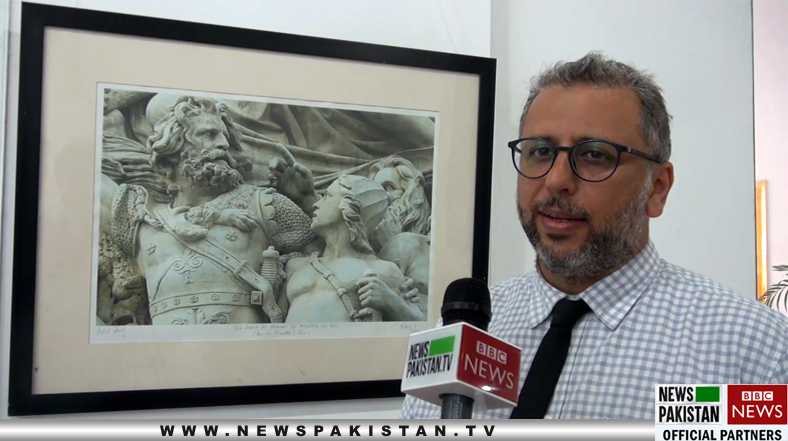
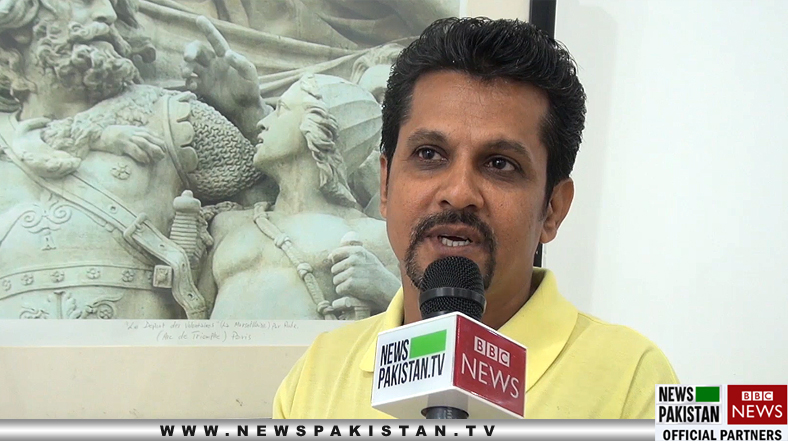
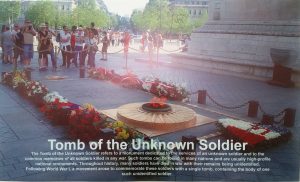
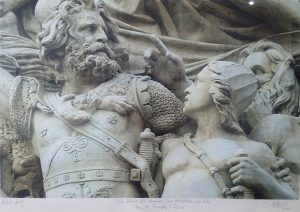
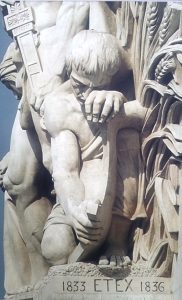
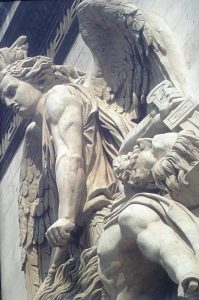

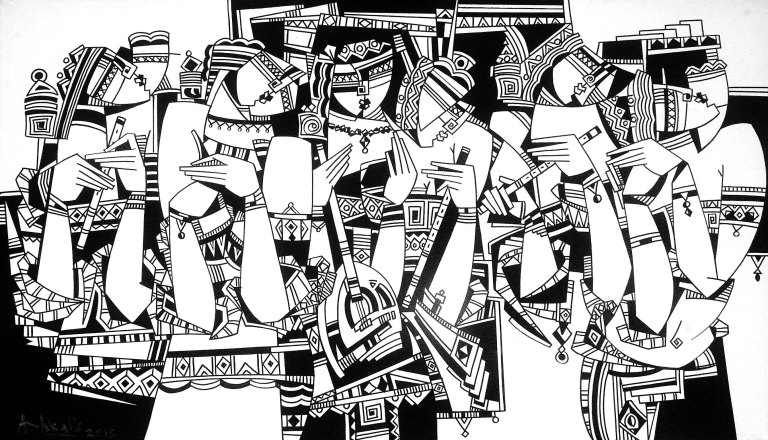
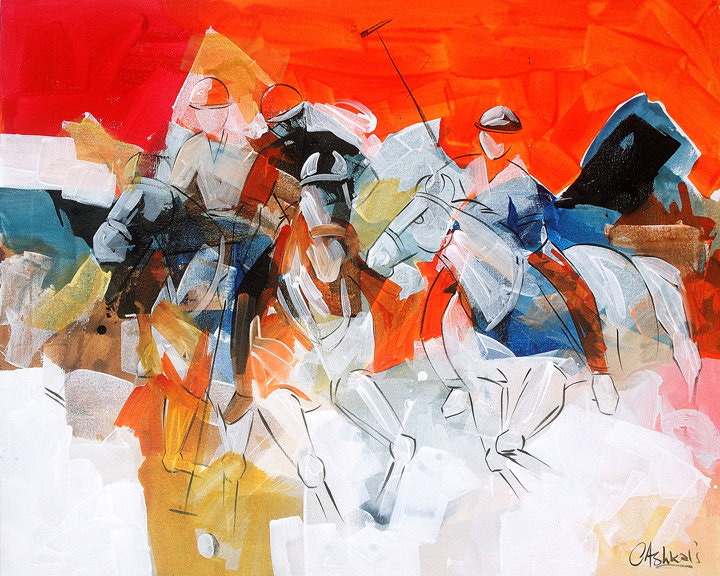
 Naveed
Ashkal, originally Naveed Akhtar, began his art education as a
shagird of Iqbal Mehdi. From 1988 till 1994 he worked consistently
in the Ustaad's studio perfecting a representational style of work
in the gruelling medium of pen and ink. The next six years were
spent in America where he learnt the painstaking art of restoration
when he participated in some assignments with friends working for
noted auction houses.
Naveed
Ashkal, originally Naveed Akhtar, began his art education as a
shagird of Iqbal Mehdi. From 1988 till 1994 he worked consistently
in the Ustaad's studio perfecting a representational style of work
in the gruelling medium of pen and ink. The next six years were
spent in America where he learnt the painstaking art of restoration
when he participated in some assignments with friends working for
noted auction houses.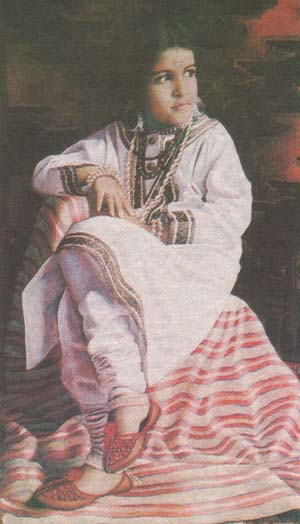 History
also reveals that Rembrandt used to teach his pupils by getting them
to copy, stroke for stroke, his own drawings. In this excellent
fashion they would absorb the master's own way of scanning the work
and his own vocabulary of graphic forms. Raphael and Primaticcio
copied drawings by Leonardo. Copying of frescoes such as those by
Masaccio in the Brancacci Chapel in Florence had been a major source
of instruction for later painters. With the opening to the public of
such great museums as the Louvre, the practice of painting from the
old masters again became a basic feature of the artist's training.
Even so sophisticated a painter as Paul Cezanne was devoted to this
method of teaching himself.
History
also reveals that Rembrandt used to teach his pupils by getting them
to copy, stroke for stroke, his own drawings. In this excellent
fashion they would absorb the master's own way of scanning the work
and his own vocabulary of graphic forms. Raphael and Primaticcio
copied drawings by Leonardo. Copying of frescoes such as those by
Masaccio in the Brancacci Chapel in Florence had been a major source
of instruction for later painters. With the opening to the public of
such great museums as the Louvre, the practice of painting from the
old masters again became a basic feature of the artist's training.
Even so sophisticated a painter as Paul Cezanne was devoted to this
method of teaching himself. Recounting
his problems and commenting on his present state of affairs, he
disclosed: "Prominent artists asked me to purchase their work; they
were not willing to leave their paintings in my gallery for display
and sale as is normally done everywhere else. Moreover, in the
group shows I was organizing, I encountered not just the tension and
division between the modern and the realistic factions here but also
discovered that there were strong sectarian differences between
artists.
Recounting
his problems and commenting on his present state of affairs, he
disclosed: "Prominent artists asked me to purchase their work; they
were not willing to leave their paintings in my gallery for display
and sale as is normally done everywhere else. Moreover, in the
group shows I was organizing, I encountered not just the tension and
division between the modern and the realistic factions here but also
discovered that there were strong sectarian differences between
artists.